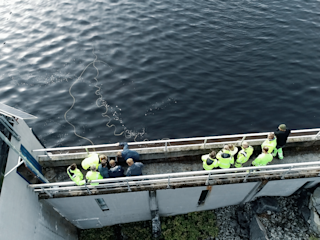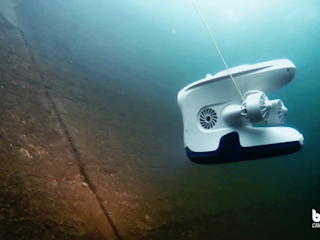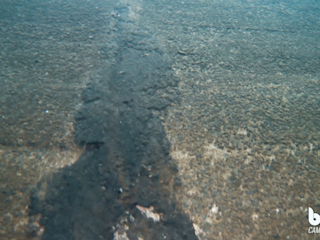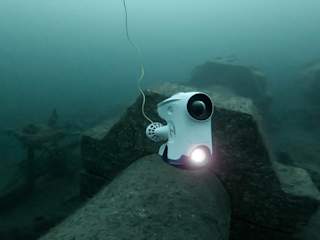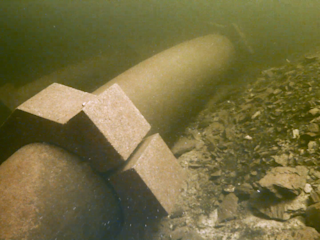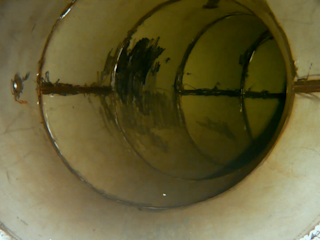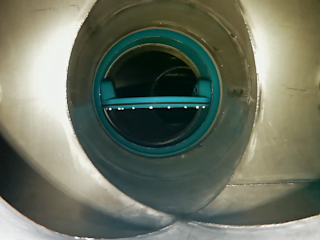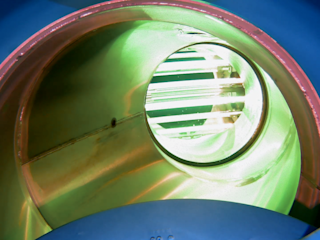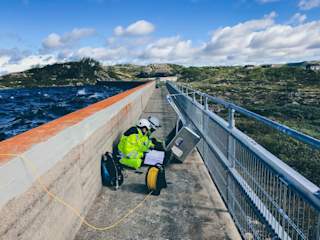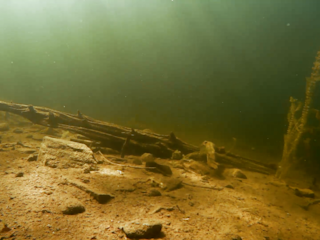Outdated pipeline system
Waterworks play a critical role in modern society. The infrastructure is responsible for distributing and maintaining drinking water sources. Ensuring that dam structures are in good condition, that no unwanted objects are in the water to affect water quality and intake pipes are undamaged, are just some of the areas that require continuous follow-up.

Both Norway and Sweden have an aging pipe network. According to a report from "Norsk Vann" (The national interest organization for the water industry in Norway), there is up to 50% leakage in the Norwegian pipeline network, and it is assumed that 25% of the Norwegian pipeline network is outdated. In Sweden, large parts of the water supply network were built in the 1960s and 1970s. This means that the need for maintenance and inspection is significant. In 2013, Norconsult prepared a report commissioned by Norsk Vann which estimated upgrade need for public and private water and sewerage systems to an acceptable 2012 standard of approx. NOK 124 billion for public water and sewerage systems and approx. NOK 76 billion for private water and sewerage systems.
Contaminated drinking water
Despite large investment needs for waterworks and pipeline systems, Norway and Sweden can boast of having access to one of the world's safest drinking water. Nevertheless, contaminated drinking water is an important cause of gastrointestinal disease in Norway, according to the National Institute of Public Health. The cases of illness are probably partly due to leaky water pipes and partly to inadequate safety routines during the execution of repair work on the water pipe network. An estimated half a million people in Norway get water from small water supply systems where the water quality is largely unknown to the authorities. In Norway, following up the national regulations and standards is led by the Ministry of Health and Care Services with the Norwegian Food Safety Authority as the central directorate in close collaboration with the National Institute of Public Health.

A crucial social responsibility
The basis for the Norwegian and the Swedish water standards is the "Protocol on Water and Health". Both countries ratified the Protocol in the 2000s and is thus obliged to follow it. The standards are not regulatory goals but goals to make the actors responsible, achieve better compliance with the regulations, and ensure safe drinking water and health. Many of the measures must in practice be implemented by the municipality, which is often the owner of the waterworks and also responsible for facilitating preventive public health and environmental work.
The municipality, therefore, has a critical social responsibility in ensuring the population access to clean water. A well-functioning, growing society depends on secure access to water.
The critical function of water also emerges from the UN's sustainability goals. Clean water and good sanitation are one of the 17 global sustainability goals that make up the 2030 agenda for sustainable development.
This is how underwater drones can contribute to safer drinking water sources
The Blueye underwater drone is a simple drone with a camera designed for the future. With underwater drones, operators at waterworks and hydropower plants can inspect and document maintenance tasks themselves without putting a foot in the water. Where divers have previously been used to detect damage and examine underwater structures, it is now possible for the municipalities themselves to do this job. With the Blueye underwater drone, you can dive yourself in suspected injuries and consider whether you must hire a diver. Underwater drones in the "mini-ROVs" segment, such as Blueye, do not require a certificate or time-consuming training. Watch the video where the Blueye drone inspects a dam at the bottom of the article .
With the underwater drone, we look at weights and attachments to intake lines. We can also drive the drone inside the line to see the condition of fouling and faults in the pipes .
- Drone operator, Trondheim City Maintenance Services.
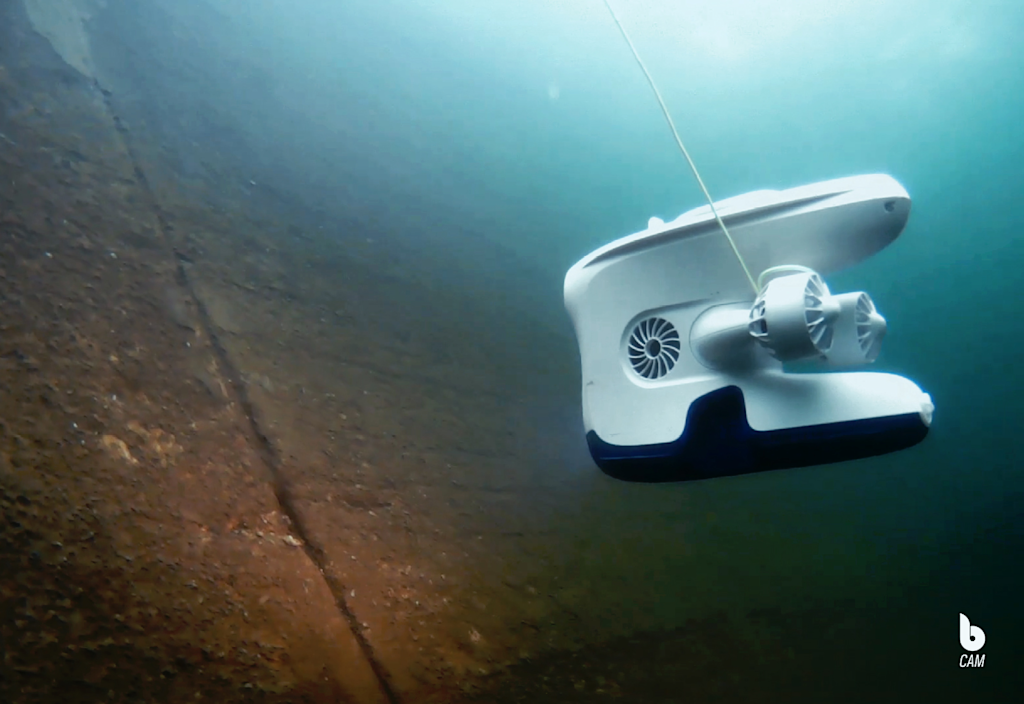
5 qualities making the Blueye drone suited for inspecting underwater infrastructure:
Cost saving
New requirements from the authorities in both Norway and Sweden require municipalities to perform frequent inspections of water mains. Traditional inspections by divers are costly, and with increasing pressure on the pipeline network due to climate change, regular inspections are inevitable. Inspecting by using internal resources, municipalities can cut costs considerably. Investing in an underwater drone with camera can therefore be justified.Sharing information
The video stream can be transferred directly from the underwater drone using Microsoft Teams. This means that the dive can be shared directly with a larger group of people, and gives the drone pilot the opportunity to communicate with colleagues and professionals live. Blueye has also developed a reporting function in the Blueye app, which makes it easy to document information from the dive. The app collects data and generates the information into a Word or PDF file.Handling
The drone's weight of only 9 kg makes it easy to transport. Traveling with the underwater drone on a plane is not a problem either. It can be packed as your carry-on bag or checked in with the Blueye Zarge's transport box.Reach
The Blueye underwater drone`s small size makes maneuvering in pipes and narrow areas easy. With its smooth and steady movements, the underwater drone provides images of high quality. At the same time, the craft also has the power to withstand strong currents.User friendliness
No prior knowledge or extensive training is needed to operate the underwater drone. The Blueye team is always available to assist if customers have questions or need support. In addition, useful articles and video tutorials are available on our websites.

Secure our future water supply
In the coming years, Norwegian and Swedish municipalities must expect encreasing costs related to inspections and maintenance of the water-supply infrastructure . Climate change and outdated pipelines will put more pressure on today's infrastructure, and we have recently witnessed cases where drinking water becomes a threat to the population. Frequently dives with an underwater drone, will let you work more proactively, which can provide great savings. You can prevent damage to structures, inspect critical components and avoid unnecessary use of divers. Most importantly, the inspections will contribute to providing your community with safe drinking water, for now and into the future.
Watch the free waterworks webinar
Want to learn more about waterworks and the benefits of an underwater drone for inspections? Watch our Blueye webinar. Read more about the webinar here or sign up directly!

Sources
Vattenmyndigheterna.se: «The condition in the water»
Mattilsynet.no: «National goals for water and health»
UNDP Norway: «Goal 6: Clean water and good sanitation»
FHI.no: «Drinking water»
More about waterworks
Customer video: Trondheim Bydrift inspects intake pipes
Want to learn more about how Blueye underwater drones can be used for inspections of drinking water sources? See how Trondheim City Maintenance investigates the drinking water source Jonsvatnet in Trondheim with Blueye.
Articles: Water and energy Webinar: Visual inspection with drones Webinar: Inspect infrastructure underwater
